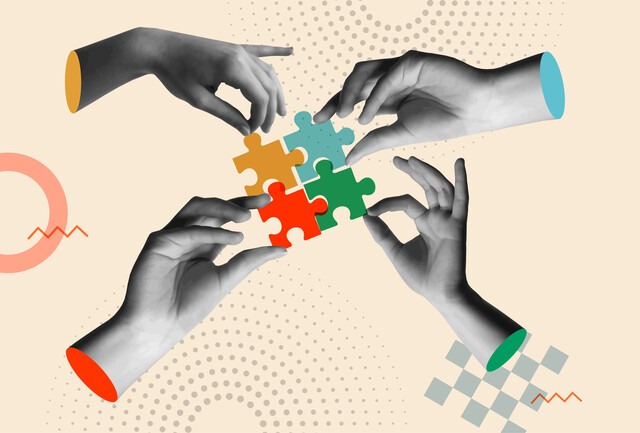We are social beings. It's in our nature to form social relationships. To reflect our fundamental need to belong, psychologist Roy Baumeister developed a theory centered around this need to belong. This theory argues that we are each born with a drive to seek, form, maintain, and protect strong social relationships. To fulfill this need, we seek relationships with those at work, at school, in our communities and religious organizations, on sports teams, in online communities, and in other social contexts. Baumeister suggests these relationships help us feel we are not alone, because we belong to a social community. Depriving people of social relationships can be physically and psychologically devastating. For example, consider the harsh punishment of solitary confinement. However, interacting with people merely on the surface level isn't enough. They don't fulfill our need to belong, because they are not emotionally close. But many of our social relationships do, in fact, fulfill our need for social interaction and emotional belonging. Consider for example your longtime friends. Research even suggests that online relationships can be just as emotionally close and fulfilling as face-to-face relationships. When we have social relationships, we feel connected to others in ways that we can't experience when we are alone, or when we have only superficial relationships.
In fact, social relationships bring very specific rewards. The rewards they bring are emotional, material, and physical health. In terms of emotional rewards, our relationships give us emotional support and encouragement in difficult times. They also give us happiness. Interacting with friends is fun, relaxing, and enjoyable, because our friends entertain us. In fact, some of our most memorable and happiest times are spent in the company of close friends. Additionally, we receive material rewards from our social relationships. People we are close to can help meet our material needs for money, food, shelter, and transportation. When we feel close to someone, we tend to share these resources in times of need. Further, our social relationships bring health rewards. They actually help us stay healthy. Studies have shown that the more social relationships someone has, the greater the person's ability to fight the common cold. Also, those with a strong social network have been shown twice as likely to survive after a heart attack than those lacking strong relationships. In fact, a review of more than 60 published studies concluded that premature mortality from causes such as cigarette smoking, obesity, and high blood pressure cite lack of strong, positive relationships as a large variable. Our close friends help us alleviate stress through the happiness and relaxation found in close friendships. Our friends also watch out for us and encourage us to avoid, or eliminate, harmful practices and situations. In this way, as well, our friends bring us health rewards.
Having and maintaining social relationships brings us not only rewards, but certain costs as well. These might include sacrificing some much-needed alone time in order to maintain a relationship, drawing on your emotional reserves when a friend needs support, and spending money for entertainment that you might not otherwise have spent. In general, we find these costs worth the friendship.
Forming and maintaining social bonds
Several theories help explain the various forces at work in forming and maintaining social relationships. In terms of forming relationships, research suggests there are four factors that are especially powerful to spark the forces of interpersonal attraction. These are personal appearance, proximity, similarity, and complementarity.
We are attracted by personal appearance � that is, considerations of external beauty and attractiveness. Consider for a moment whether you were ever drawn to form a relationship with someone on the basis of you finding them physically attractive. One reason we do this is because we value and appreciate physical attractiveness, so we want to surround ourselves with people we believe are attractive. What is considered beautiful is of course culturally dependent. Thin, physically fit body types are generally considered most attractive the U.S. and Western Europe, for example. However, this isn't true in other cultures, where some value physical roundness and softness over muscular definition. Whatever our definition of beauty, our preference for physical attractiveness may be innate. Some studies have shown that infants as young as six months old prefer looking at images of attractive people to those of unattractive people, and as we age, we continue to place a premium value on appearance. Our preference for physical attractiveness in forming relationships does not include only possibilities for romantic partnerships, but research has shown that our preference for beauty extends to our desire to form friendships and work associations with attractive people over unattractive ones.
A second area of attraction is physical proximity. This refers to how close together people live or work, or how often they have a chance to interact. We tend to form and maintain social relationships with those in our more direct physical environments than with individuals we don't often see. For example, we are more likely to form a close relationship with the next-door neighbor, than with the neighbor down the street, and with co-workers in our own department, rather than our co-workers in other departments. Some research suggests that social networking websites, such as Facebook, have minimized our need for close proximity in order to form close relationships. These types of websites make it more possible to maintain close relationships, despite physical distance.
We are also attracted by similarity. We tend to form relationships with those with whom we have things in common. This allows our interactions to be more comfortable and familiar, which we tend to find very attractive. When we interact with people who are similar to us, we find social validation. This is an important reason why we are attracted by similarity. When we like people who are like us, we are, by extension, liking ourselves. We are drawn to people with whom we share similarities, because they make us feel better about who we are, whether consciously or not. A second reason we are attracted by similarity lies in genetic interests. In primitive times, similarity in physical appearance and behavior helped us identify who we were related to and who not. This was important because humans are motivated to help those with whom we share genetic material. This explains why, for example, we love our own children more than other people's children, and we help our own families more than we help strangers. When we help our genetic relatives, we help our genes survive into future generations. This is also not conscious, but rather, over time we have developed the motivation to help our own line succeed.
Finally, sometimes opposites attract. We are attracted by similarity, yes. But we are also attracted by those whom we believe complement us, or benefit us in some way. This is the concept behind the attraction of complementarity. Key to making this type of attraction work is that both people see their differences as something positive. For example, sometimes religious or political beliefs present too much difference � a difference that becomes insurmountable. However, when one person is gifted at graphic design and another in computer technology, the two might find ways to help each other.
Uncertainty reduction theory
In general, uncertainty makes us uncomfortable. In getting to know someone, we reduce our uncertainty about that person. This is very comforting to us. Each new piece of information we receive about someone reduces our uncertainty about that person that much more. Additionally, and importantly, research suggests that the less uncertainty you have about someone, the more you will like that person.
Relational maintenance
Having discussed reasons for forming relationships, we now turn our attention to how to maintain them, so they can continue to grow and thrive. Researchers Stafford and Canary have located five primary relational maintenance behaviors: positivity, openness, assurances, social networks, and sharing tasks. Positivity behaviors make other people feel comfortable around us. These are acting friendly and cheerful, being courteous, and refraining from criticizing others. In practicing positivity, people tend to smile, express affection and appreciation for others, and not complain. These people are pleasant to be around, and these behaviors tend to make people well liked. Conversely, complaining, criticizing others, and pouting when you don't get your way reflect low positivity behaviors.
Openness reflects the willingness to discuss your relationship with your relational partner. In practicing openness, people are likely to disclose their thoughts and feelings, seek feedback from the relational partner on that person's perception of the relationship, and confide in that person. Interestingly, too much openness can have adverse effects on a relationship, but an appropriate amount keeps the relationship strong and helps maintain it. We are practicing low openness in refusals to share our thoughts and feelings with others and not reciprocating disclosures.
The idea of a social network includes all of your friendships, and all of your family relationships. In maintaining a relationship, it is important to share your social networks with another person. For example, your best friend probably knows your family and many of your other friends. This joining of social networks is known as convergence, which research suggests is important to keeping relationships stable and strong. When we speak ill of the friends and relatives in another's social network, we undermine this convergence.
In sharing tasks, you perform your fair share of the work in the friendship. If your friend does a favor for you, you need to return it. Being in a relationship often requires energy and effort investments. Therefore, it's difficult to maintain a relationship when the two parties are not contributing equally. This article has discussed components of relational formation and maintenance. These principles apply in all of our interpersonal relationships � friendships, workplace relationships, and romantic partnerships.























